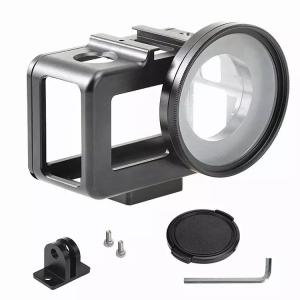
Add to Cart
High Precision CNC Machining Services Digital Camera Mould Plastic Rapid Prototyping
Product Feature:


Our Company:

Manufacturing Strength:
Package & Shipping:



FAQ:
1. Are you a trading company or factory?
A: We are a factory in Dongguan of China.
2. Which materials are used in CNC machining?
A: Almost any material can be used in a CNC machine. It really depends on the application. Common materials include metals such as aluminum, brass, copper, steel, and titanium, as well as wood, foam, fiberglass, and plastics such as polypropylene, ABS, POM, PC, Nylon, etc.
3. How Does CNC machining Work?
A: When a CNC system is activated, the desired cuts are programmed into the software and dictated to corresponding tools and machinery, which carry out the dimensional tasks as specified, much like a robot.In CNC programming, the code generator within the numerical system will often assume mechanisms are flawless, despite the possibility of errors, which is greater whenever a CNC machine is directed to cut in more than one direction simultaneously. The placement of a tool in a numerical control system is outlined by a series of inputs known as the part program.With a numerical control machine, programs are inputted via punch cards. By contrast, the programs for C NC machines are fed to computers though small keyboards. CNC programming is retained in a computer’s memory. The code itself is written and edited by
programmers.Therefore, CNC systems offer far more expansive computational capacity. Best of all, CNC systems are by no means static, since newer prompts can be added to pre-existing programs through revised code.
4. What are different types of machining?
A: Turning- Turning or Lathing involves rotating the workpiece on a machine, while a single-edged cutting tool remains stationary.
The cutting tool is slowly moved parallel to the workpiece’s rotational axis, removing material as it goes.
Drilling - Drilling results in creating a round hole by rotating a cylindrical tool parallel to the workpiece’s axis of rotation.
The hole created is equal in diameter of the tool that was used.
Milling - Milling is the process of removing material, using rotary cutters, from a workpiece in a feed motion perpendicular to the rotational axis of the cutting tool. This is one of the most common forms of machining used today.
5. How does Torchmold ensure the quality of my parts?
A: Once your order is confirmed, we will execute the whole fabricate design (DFM) review, so that our engineer think that maybe affect any quality problems of your parts.Using a set of test equipment to check and confirm the all materials.The final inspection report before shipping.